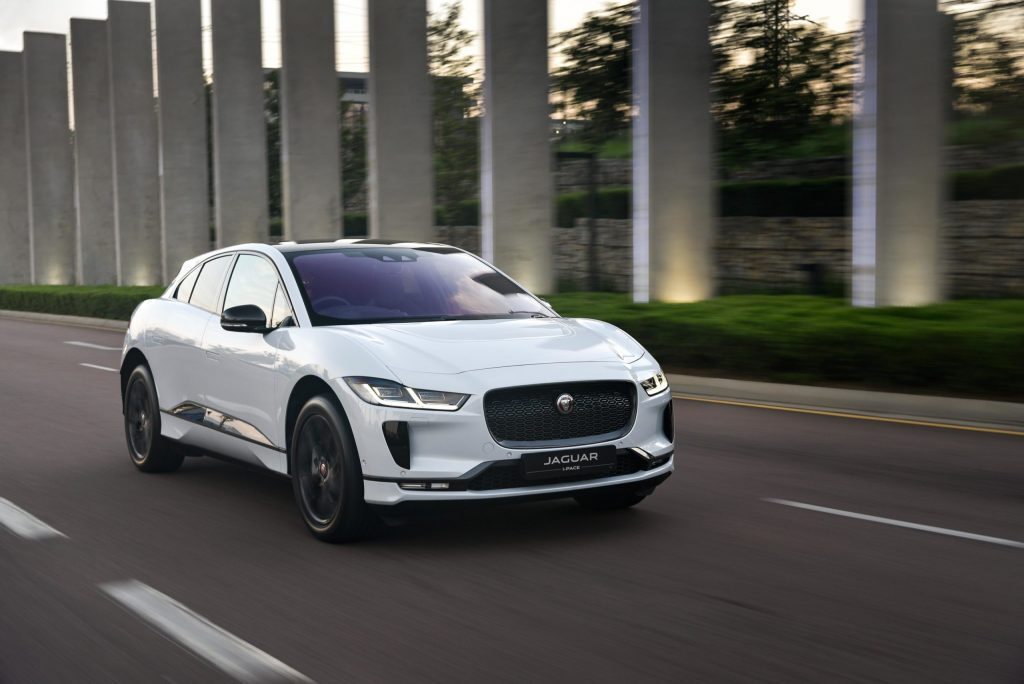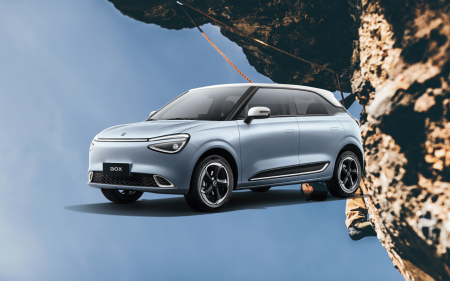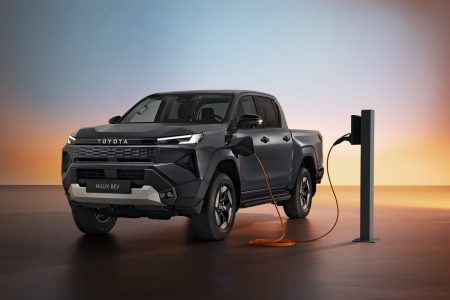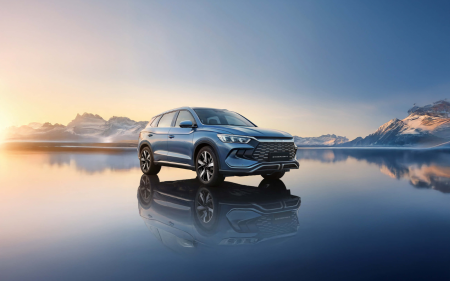The Jaguar I-Pace isn’t the first all-electric car to hit South Africa’s roads, but it’s the first that’s filled us with childlike glee, and the only one we wouldn’t mind being seen in (the BMW i8 doesn’t count, it’s a hybrid). So far, at least. The floodgates for pricey, stylish, SUV electric vehicles (EVs) are about to open, so can the I-Pace deliver an early mover advantage? More importantly, can it change attitudes towards EVs? We got behind the leather-clad wheel of Jaguar’s poster child for electrification a week ahead of its public release to find out.
Gone in 4.8 seconds
Aside from cutting down on emissions and turning heads, EVs have a few other advantages. First off, they’re almost silent. Second, all of the torque they have on tap is available immediately. The result is consistent and impressive acceleration. In the case of the I-Pace, the 696Nm on offer (and combined power output from the pair of electric motors of 294kW) translates into 0-100km/h in 4.8 seconds… even though the five-seater SUV weighs 2.2 tonnes. If you think EVs are boring, the I-Pace is here to categorically prove you wrong. It’s responsible, agile and incredibly sure-footed (an 850kg battery in the floor will do that).
We got to pit the I-Pace against a top-end F-Type (with around 700Nm itself) in a drag race at the launch event (see the video above). Each time, the winning vehicle was whichever one got the better start. Unlike the F-Type, though — which can hit up to 300km/h — the I-Pace tops out at 200km/h. But then, outside of the autobahn or a race track, none of us should be driving that fast anyway, so we can’t exactly make a black mark of that.
Going the distance
There are two big obstacles car manufacturers need to overcome if they’re going to usher in our electric future: range anxiety, and cost. Jaguar says the 90kWh battery in the floor of the I-Pace provides a range of up to 470km. That’s inevitably going to vary depending on how heavy footed the driver is, and how high the regenerative braking is set. At it’s most aggressive setting, Jag’s energy harvesting braking enables one-pedal driving, which is great for urban stop-start driving. Out on the open road we preferred the softer setting.
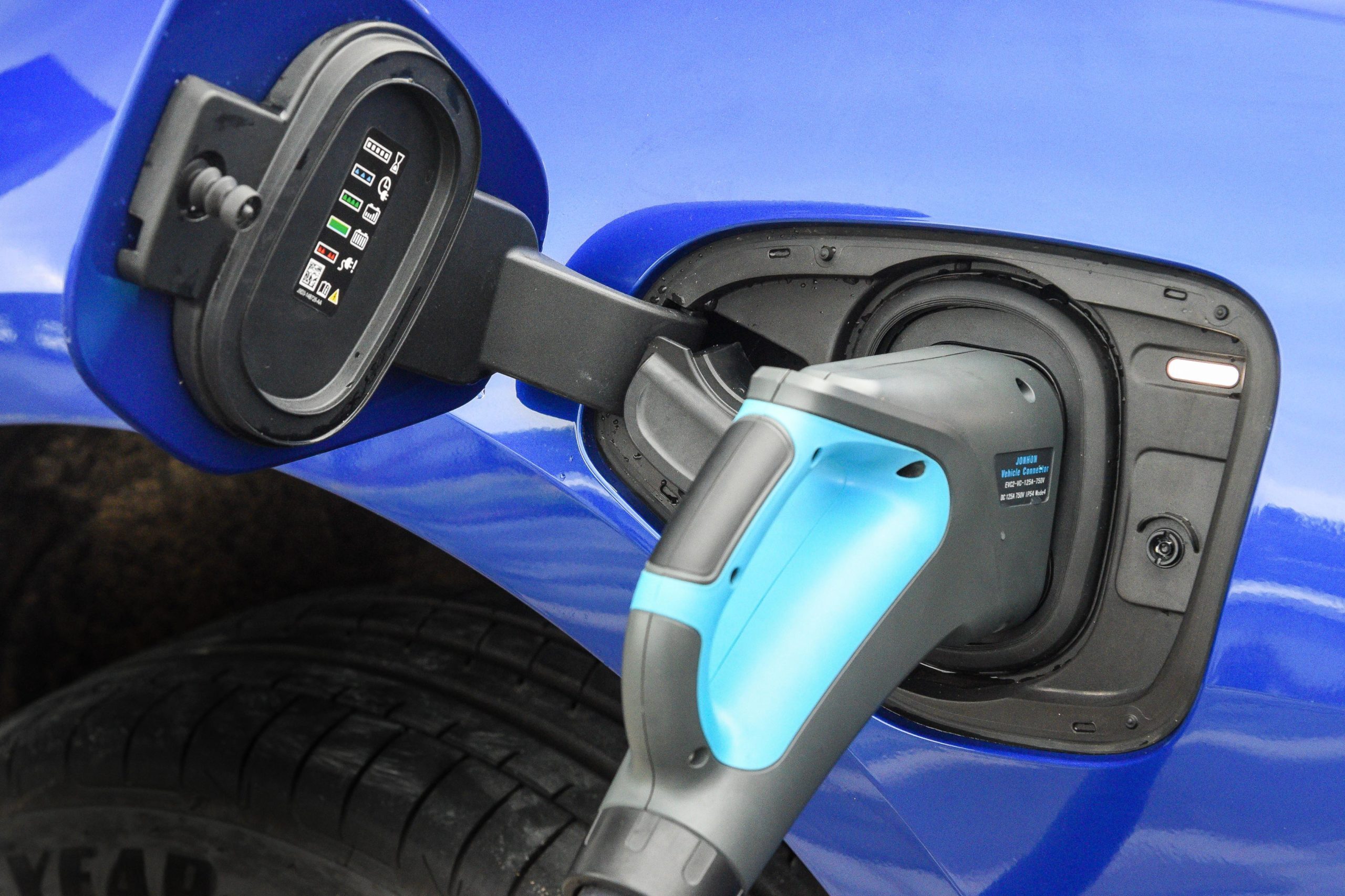 As you’d expect, we were enthusiastic about testing the acceleration of the I-Pace during the launch event, but despite that, an almost 300km route still left us with a reported 130km of range. Whereupon the vehicles were topped up again, as is the norm with EVs. Unlike combustion engines which tend to get fuelled when they’re running low (or a fuel-price increase looms), EVs require their owners get in the habit of filling them up whenever possible… much like a mobile phone, laptop or tablet.
As you’d expect, we were enthusiastic about testing the acceleration of the I-Pace during the launch event, but despite that, an almost 300km route still left us with a reported 130km of range. Whereupon the vehicles were topped up again, as is the norm with EVs. Unlike combustion engines which tend to get fuelled when they’re running low (or a fuel-price increase looms), EVs require their owners get in the habit of filling them up whenever possible… much like a mobile phone, laptop or tablet.
We reported last year that Jaguar was rolling out a public network of more than 80 charging stations, which will make it possible to take the I-Pace on cross-country road trips. Most of the units are capable of 60kW output, which would theoretically take a fully discharged I-Pace to 80% charge in under an hour and a quarter, or add 100km of range in around 20 minutes.
[vrview img=”https://stuff.co.za/wp-content/uploads/2019/03/SAM_100_0546.jpg”]
Jaguar says the I-Pace also supports 100kW chargers, but that these don’t yet exist in South Africa. The point, obviously, is that as infrastructure improves, I-Pace owners will be able to take advantage of it. So that’s the range worries tackled. The price? Not so much, but more on that later.
Space for cadets
It comes as no surprise that the I-Pace is lushly finished and luxurious. The infotainment system is the same Touch Pro Duo double-screen one found in recent Range Rovers like the Velar and includes capacitive sensors on the steering wheel and touch-sensitive dials for things like climate control. The system is intuitive and matches the futuristic feel of the I-Pace perfectly.
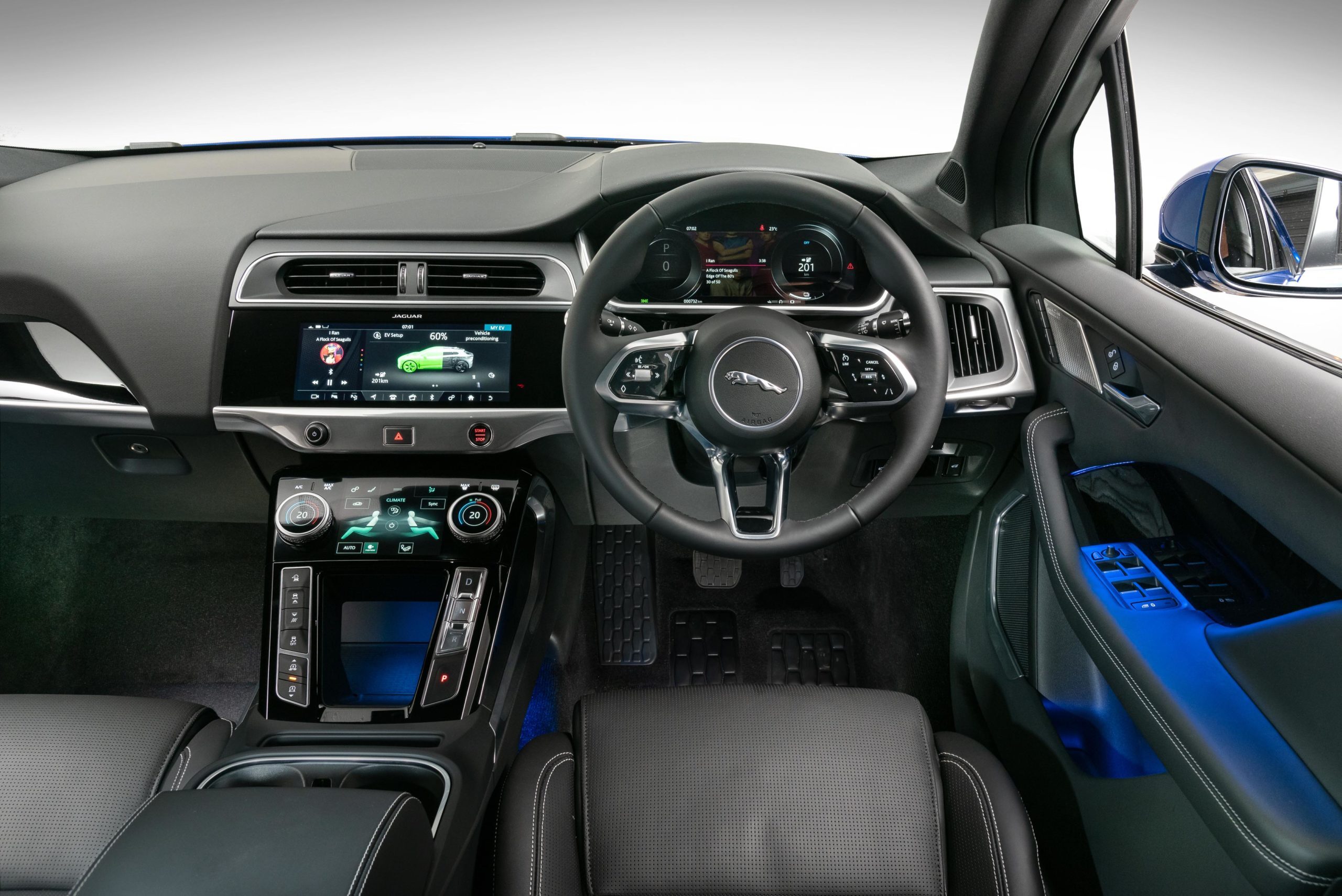 Buyers will be able to choose from four specifications at launch, S, SE, HSE and First Edition, but the standard features on offer across the range are pretty compelling on their own. The panoramic, anti-UV treated glass roof is especially glorious, and adds to the feeling of spaciousness in an already voluminous cabin. That deceptively large interior is thanks to the I-Pace’s long wheelbase and lack of combustion-vehicle space-hogging design essentials. It feels more like a Range Rover than a compact SUV.
Buyers will be able to choose from four specifications at launch, S, SE, HSE and First Edition, but the standard features on offer across the range are pretty compelling on their own. The panoramic, anti-UV treated glass roof is especially glorious, and adds to the feeling of spaciousness in an already voluminous cabin. That deceptively large interior is thanks to the I-Pace’s long wheelbase and lack of combustion-vehicle space-hogging design essentials. It feels more like a Range Rover than a compact SUV.
Other standard features include an automatic tailgate, LED lights, adjustable air suspension, and parking-assist cameras. Curiously, though, the head-up display is limited to the higher specs, which is disappointing given the base cost of almost R1.7 million.
Power up the ranger
I-Pace owners will use an RFID card to activate charging stations, both public and the home units they can choose to purchase with the vehicle. Cards can be topped up via a website, and Jaguar will absorb 25% of the cost of using public chargers for all I-Pace owners (until further notice, at least).
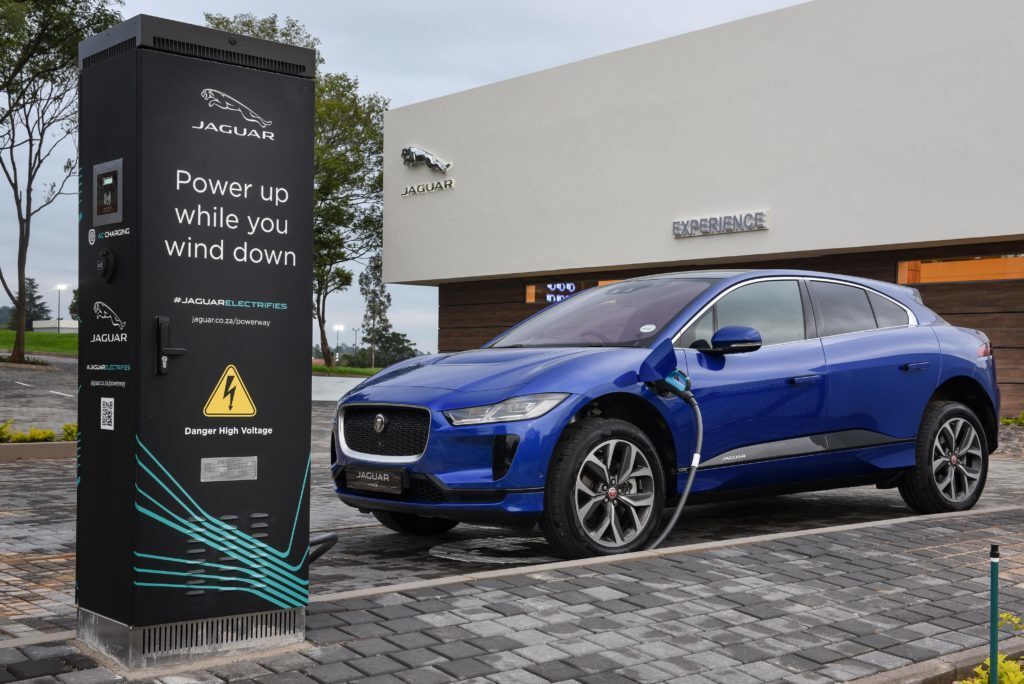 Jaguar says the current rate for 1kWh on the card will be between R3 and R3.50, depending on location, though users can expect to pay more than that for high-speed AC charging (around R6 for 1kWh). That means to charge the full 90kWh I-Pace battery at the cheapest rate will cost around R300, or double that in the case of rapid charging. Home charging, of course, will be even cheaper.
Jaguar says the current rate for 1kWh on the card will be between R3 and R3.50, depending on location, though users can expect to pay more than that for high-speed AC charging (around R6 for 1kWh). That means to charge the full 90kWh I-Pace battery at the cheapest rate will cost around R300, or double that in the case of rapid charging. Home charging, of course, will be even cheaper.
Once the I-Pace is full, the driver will be notified via an alert from the accompanying mobile app. The app can also be used to check the status of the car, precondition it (heat it up or cool it down), schedule charging for specific times (presumably off-peak where possible), and impress friends at dinner parties.
The future doesn’t come cheap
The I-Pace looks and drives like the sort of futuristic people-carrier you’d expect it to. After all, it’s the flagship advertisement for a non-combustion future from one of the world’s most recognisable luxury brands. We knew it wasn’t going to be cheap, but now we’ve had it confirmed.
The cheapest, S-line I-Pace starts at R1,687,200. Step up to the SE and that jumps to R1,745,400. The HSE-line, meanwhile, will cost you a minimum of R1,820,900, while the top-end First Edition version opens the bidding at R1,920,700. Get stuck into the extensive customisation catalogue and it’s easy to go well over R2 million (and add some wait time for delivery).
If you’re eyeing an I-Pace you might as well do some customising, though, because you’re going to be waiting regardless. All of the 60-odd vehicles earmarked for South Africa have already been sold. It turns out there are more deep-pocketed people willing to be first adopters than we thought.
We loved our time with the I-Pace, and we can’t wait to start spotting them on the road. Sure, we’ll never be able to afford one, but here’s hoping that as EVs become more common, some of the features EVs are bringing to market will trickle down to the more affordable iterations. Of course, we may be living in a world of self-driving Ubers by then. It’s simply too early to tell.

